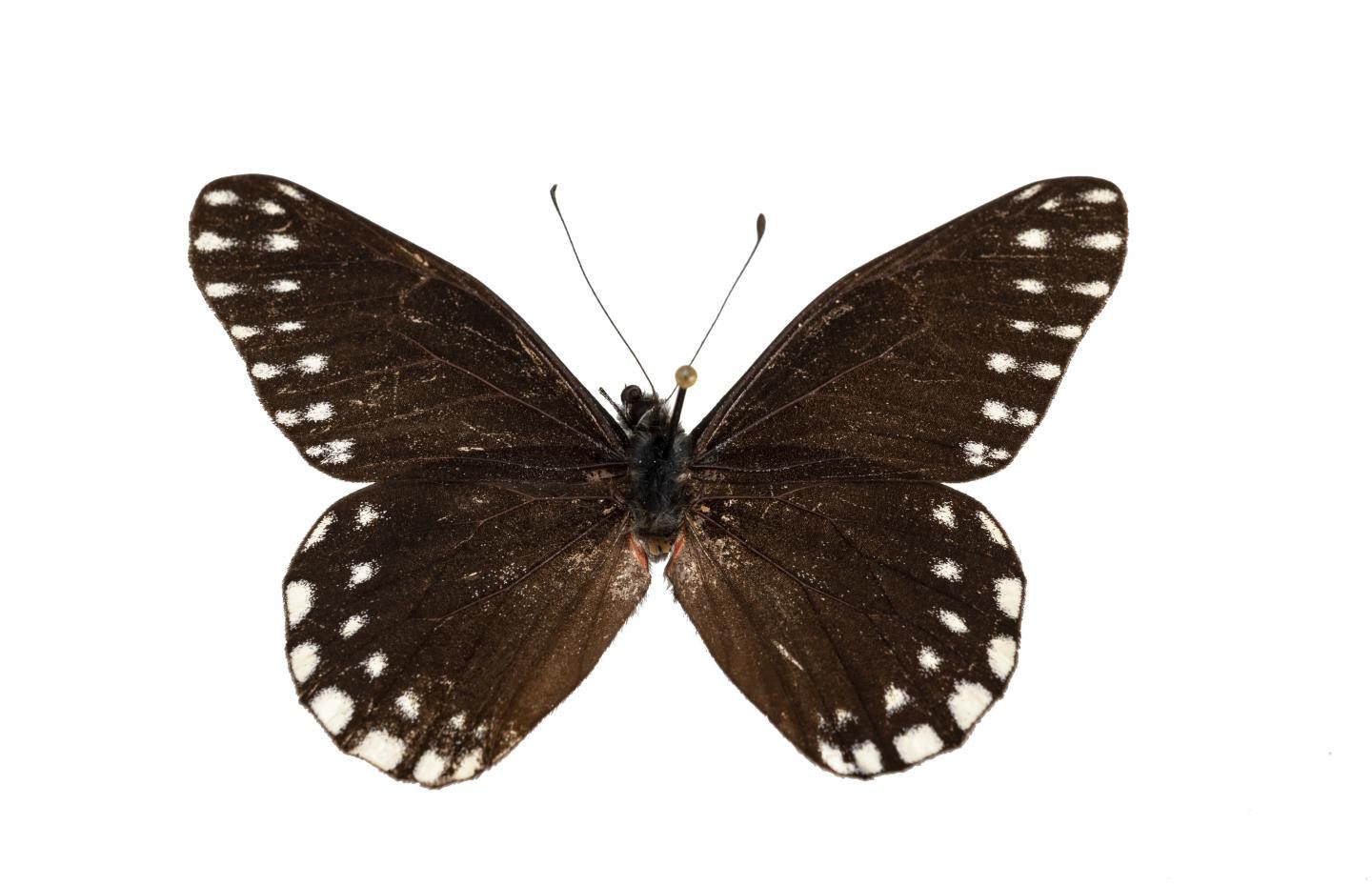A Rare and Striking Butterfly Is Named for a Pioneering Female Naturalist
Maria Sibylla Merian watched these beautiful insects more closely than anyone else of her time.

Maria Sibylla Merian watched butterflies more closely than anyone else of her time. Born in 1647, the self-taught naturalist made beautiful illustrations of the insects and flowers she observed. Back then, many people believed that insects generated spontaneously from decaying matter, but Merian knew otherwise.
She watched caterpillars closely, documenting their transformation into butterflies, and watched as new eggs developed into caterpillars. Her books illustrating the metamorphoses of butterflies and moths were both artistic treasures and groundbreaking scientific works.
Centuries after her death, she now has a striking butterfly named after her.
Catasticta sibyllae has unusual coloring for a butterfly of its kind—its wings are black, with rows of white dots, and a flash of red at the bug’s body line. The first specimen known to science was found in Panama and kept at the Smithsonian Natural History Museum since 1981; the second specimen was collected recently.
The Smithsonian specimen had sat unnoticed in a drawer for years, when a fellow scientist sent a picture of it Shinichi Nakahara, a lepidopterist at the Florida Museum of Natural History. By chance, another colleague found the second specimen just a couple of months later. By then, Nakahara suspected it could be a previously undescribed species and asked his colleague if he might have a leg from the new specimen. Using that piece of butterfly, he was able to sample the DNA and confirm his hunch.
It felt appropriate to name such an unusual butterfly for a uniquely adventurous naturalist. Later in her life, Merian divorced her husband, moved to Amsterdam, and lived in a commune, selling art to support herself. One of her greatest adventures was a five-year trip to Suriname, a Dutch colony in South America; she funded the trip by selling 255 works of art.
“Merian was centuries ahead of her time, and her discoveries changed the course of entomology,” Nakahara said in a statement. Other plants and animals have been named after her, including a cane toad, a lizard, and a bird lily. She’s also the namesake of a couple of butterfly subspecies. But this is the first butterfly species to be named after her, a fitting honor for a remarkable woman.














Follow us on Twitter to get the latest on the world's hidden wonders.
Like us on Facebook to get the latest on the world's hidden wonders.
Follow us on Twitter Like us on Facebook